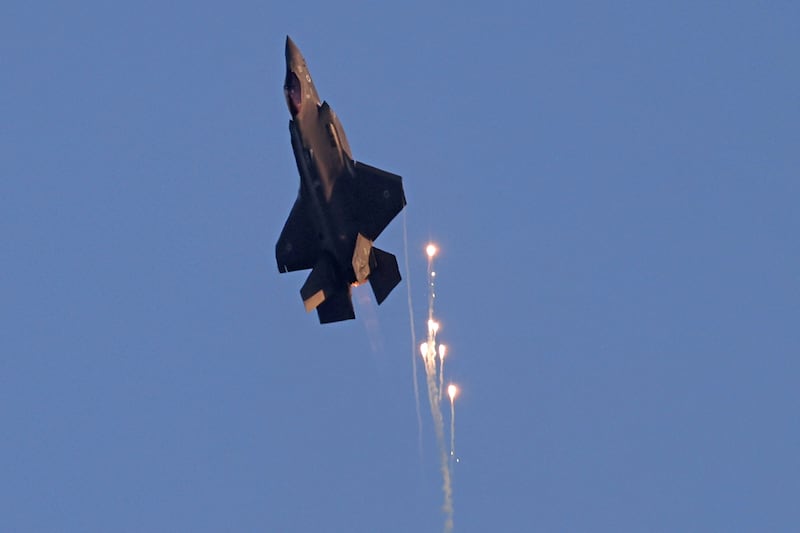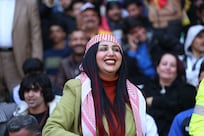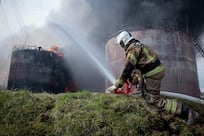Live updates: Follow the latest news on Israel-Gaza
The Israeli air force carried out a wave of attacks in eastern Syria that killed Iranian military personnel, sources said on Wednesday, after Damascus accused the US of carrying out the strikes.
Syrian state media initially attributed the strikes on “residential and military” targets to the US, reporting that the strikes killed one civilian and injured at least 19 soldiers and 13 civilians. US officials denied any involvement.
Sources told The National that the official Syrian statement was incorrect, while the official Iranian news agency, Irna, reported that the attack was “executed by the Zionist regime". Iran says its officers serve in an advisory role in Syria at the invitation of Damascus.
Social media accounts that support Iran's Islamic Revolutionary Guard Corps praised Bahrouz Wahhdi, an IRGC commander killed in an air strike in Albu Kamal, Deir Ezzor province. Another member of the IRGC, Hajj Askar, was severely injured in another strike.
Tehran started sending more military personnel in Syria as soon as pro-democracy demonstrations started in the country in March 2011.
Although Tehran's intervention has been crucial to the survival of the Syrian regime, Iran has been contesting territory in the country with Turkey, the US and even Russia. There are also occasional conflicts of interest between the pro-Iranian forces and Russia, despite both supporting the regime.
Israeli and US strikes on Syrian territory have intensified since Israel's war in Gaza against Iran-backed Hamas broke out in October.
Tuesday's strikes targeted the Albu Kamal area near the Syrian-Iraqi border, which is seen as the bottleneck of the supply line linking Iran to Hezbollah in Lebanon and other pro-Iranian militias through Iraq and Syria.
The IRGC's Quds Force is charged with training, arming and assisting proxy militias across Lebanon, Syria, Iraq and Yemen. Since December, air strikes in Syria have killed at least four commanders of the force.
A senior western military official said “Israel has made it known” that it has carried out the latest attack. He did not elaborate.
The head of the Syrian Observatory for Human Rights, Rami Abdulrahman, told The National that “what happened in Deir Ezzor was Israeli attacks".
“The main target was an engineer tasked with establishing a telecommunications structure between militias in Deir Ezzor,” he told The National.
He added that “the final toll of the Israeli strike is three Revolutionary Guards, nine Iraqi militias affiliated with the Revolutionary Guards, and five Syrians, including a Syrian linked to the Lebanese Hezbollah. There is also a dead civil engineer. There were no deaths among the Syrian soldiers.”
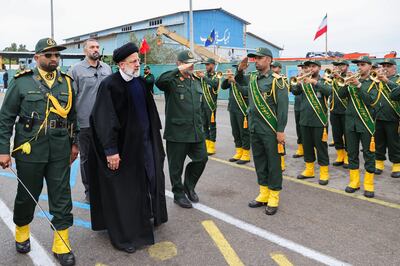
A villa used by Iranian security personnel
Albu Kamal is in the Syrian part of the Euphrates River valley, which is divided into US and Iranian zones. American forces are mainly to the east of the valley, where most of Syria's oilfields are, and Iranian and Russian forces are mainly to the west.
The IRGC's Quds Force sent Lebanese, Iraqi, Afghan, Pakistani and local Syrian militias to the area. But Iraqi Shiites comprise the majority of the 7,000 or so pro-Iranian militia in the east.
Members of the Syrian opposition to President Bashar Al Assad said that the attack on Tuesday struck a villa used by Iranian security personnel.
One opposition member said that after a string of Israeli attacks on targets in Syria belonging both to the military and to Iranian-linked groups, Syrian authorities chose to say the US was behind the attack.
He said the Syrian authorities resorted to this to avoid embarrassment, because repeated Israeli strikes went unanswered. Damascus, he added, has an interest in giving the impression that the US has kept attacking eastern Syria, although there is a de facto truce between Iran and the US.
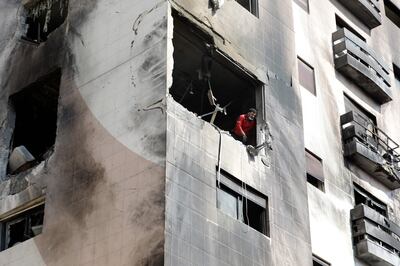
Syria, meanwhile, is largely powerless to stop either US or Israeli air strikes, since its air defences are antiquated and worn down by years of war. F-35 Lightning jets used by the US and Israel are often said to appear on radar as objects the size of birds or flying insects, depending on their speed and the angle of the jet in relation to the radar beam.
Syria could, at the risk of inviting more Israeli strikes, launch rocket salvos into Israel – as some of its allied militias have done. But it allows Iran to lead anti-US operations in the east, possibly out of fear of provoking aerial attacks by Washington.
“It is in the regime’s interest to show that there is an anti-US resistance active in eastern Syria,” he said.
